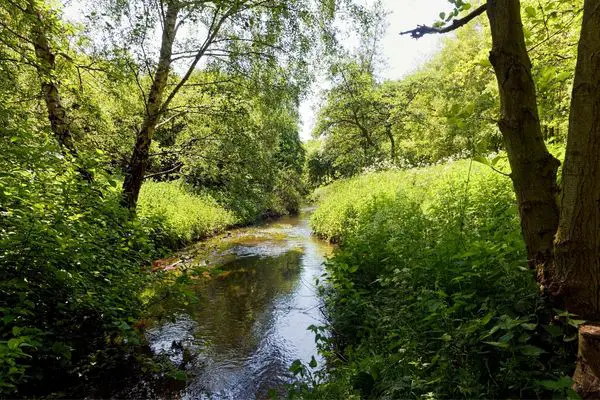I spent my childhood playing in Mill Stream, I use to build rock dams and harass the fish living in the shaded pools. After college, I honed my fly casting skills on the crystal clear waters of Spring Creek.
So these two trout streams have a place close to my heart.
I suspect many other fly fishermen also have had memorable days and precious memories stalking trout on such streams. Some will even like to keep such streams a secret.
I admit the headline was written to be misleading.
Mill and Spring are the two most common stream names in America. In my hometown alone, we have two Mill Streams. A few minutes of scanning google maps I can easily reveal several more. In almost every trout region there is a Spring Creek or Mill Stream waiting to be discovered.
So why are these names so common?
Will, Mill Streams typically have a flour or timber mill constructed alongside them sometime in the past. The remains often still remain, although the mills themselves, unless restored by some historical trust are at best a pile of rusted gears and rotten timbers.
Spring creeks are named after the fact that they are predominately spring fed. Many Spring Creeks are prime trout fishing water. In some areas, they are called lime streams or limestone streams. Not all Spring Creeks are called Spring Creek but many are.
Are Mill Streams good fishing?
In most cases, mill streams are great little fisheries, because mills are often constructed on rivers with steady and consistent flows. These flows make for a more stable environment for trout to survive. While not all Mill streams contain trout, I will say the majority do.
Are Spring Creeks good fishing?
Yes, Spring Creeks often provide excellent trout fishing. The flows are steady and the water temperature is well regulated from all of the erupting springs.
When searching on a map, and you find a Spring Creek flowing through a trout region. They are nearly always worth a look. Just make sure there is public access before making the trip.
It is not only rivers but countless lakes and ponds that also share the same name. I will now share some of the most fished trout lakes in the country.
Near the top of the list we have Long Lake, Oxbow Lake and Silver Lake, but my personal favorite has to be Blue Lake. While I will not claim that all these lakes hold trout, many certainly do.
Silver Lakes are often found in mountainous areas, the water is cool and in the mornings when the sun is low in the sky they can glitter silver. Such mountain lakes are often prime fisheries.
Oxbow lake’s are more common alongside large meandering rivers. If the rivers contain trout, chances are that the neighboring Oxbow Lake will also contain fish. I once decided to launch my fishing kayak into one such Oxbow Lake, it was surrounded by old growth willows, must admit. It did require quite the portage to even reach the water, but I was rewarded by some supreme trout fishing.
The most common lake in North America is actually Mud Lake.
Mud lakes in general are more a mixed bag of fisheries. Some of them are great, and very productive. While others are more forgettable. If there was one characteristic that sums up mud lakes it would be shallow, and warm in the summers. The shoreline can also be soft, making access difficult and sometimes the water is even muddy in color. In such cases, they could be a better carp fishery than trout.

